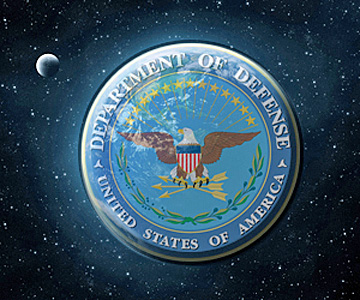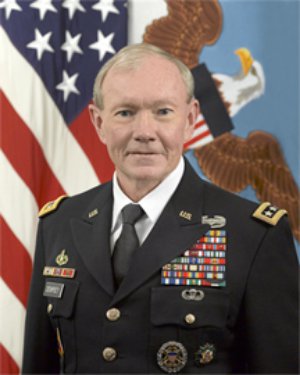US Army General Martin E. Dempsey bristles when he hears someone use the word drone. “You will never hear me use the word ‘drone,’ and you’ll never hear me use the term ‘unmanned aerial systems,’” the chairman of the Joint Chiefs of Staff said today. “Because they are not. They are remotely piloted aircraft.”
Dempsey spoke to Reuters and American Forces Press Service on his way back to Washington from Brussels and the 171st Chiefs of Defense Meeting at NATO headquarters.
The American people seem to have the image of robots “flying around semi-autonomously making their own decisions and conducting kinetic strikes without oversight by responsible human beings,” he said. “It’s not like that at all.”
There are more than 80 people for each remotely piloted vehicle, he said. They operate and maintain the aircraft, and analyze the information gathered. “It’s so important for us to remember that there is a man or woman in the loop,” he said.
And, whether a service member uses a bayonet or a remotely piloted aircraft with a Hellfire missile, “the ethical application of force applies,” Dempsey emphasized.
The law of armed conflict, the principles of war, U.S. ethics and legal bases apply no matter what the weapon, the chairman reiterated. “So, when we introduce remotely piloted aircraft into a theater in a Title 10 role, we apply the same standards,” he said.
The standards are predicated on the near-certainty of the effect — is the weapon going to do what the operators need it to do? Military personnel always assess the risk of collateral damage on people or buildings. And, “we ensure that we are achieving an effect with the appropriate behavior for the United States of America,” Dempsey said.
Remotely piloted aircraft are “a valid, useful and responsible military instrument in the way we use them,” he said. “So long as we continue to think of them that way and so long as we continue to use them in a transparent … ethical way, then I have no concerns about their use.”
Source: US Department of Defense



Fine with Mr Dempsey´s line of thought
But please bear in mind that any term used today is equally valid and they all mean the same to the general public.
UAS=VANT=drone=RPAS (the only difference, if you like, is throwing in the sense of a system or a part of a system, which to the general public is irrelevant)
The term RPAS was precisely launched to give the general public a sense that there is in fact a human making moral decisions behind the UAV. So actions over life and death were not merely taken by a mindless robot with killing power.
This obviously applies only to the military sector but has widespread to all UAV sectors by capilarity.
The RPAS denomination was deployed simply to counteract the badly damaged image built around the term “drone” mainly created by gruesome war footage on military drones spread around the media .
The action to change the denomination must be right, as few people have complained about even more brutal images taken from Apache helicopters during war. I think that humans indeed tend to think that if a military weapon does not contain a human inside the effect they then produce is rather against human rights.
From my point of view (as an industrial UAV user) the appropriate term is UAV because I want to denote exactly the opposite. I do not want my customers (my general public) to think that there is a human behind the UAV. My interst is that they feel the UAV is a completely automated and precise machine (which is) so there is no need to rely on a human that can do things wrong.
I will keep using the UAV/UAS term because it describes better what I do to my public.
Denomination, in this case, depends on how you want your public to see your product.
Excellent, and well-said response Rod! I agree with you completely, and look forward to the day that the media stops maligning civilian uses of UAS/UAV tech by lumping them in with military applications 🙂
If unmanned aerial system (UAS) is the wrong word why doesn’t he change it in the dictionary he directs, Joint Publication 1-02. It only has UAS, not RPA. Seems simple to change if that is the word you want.